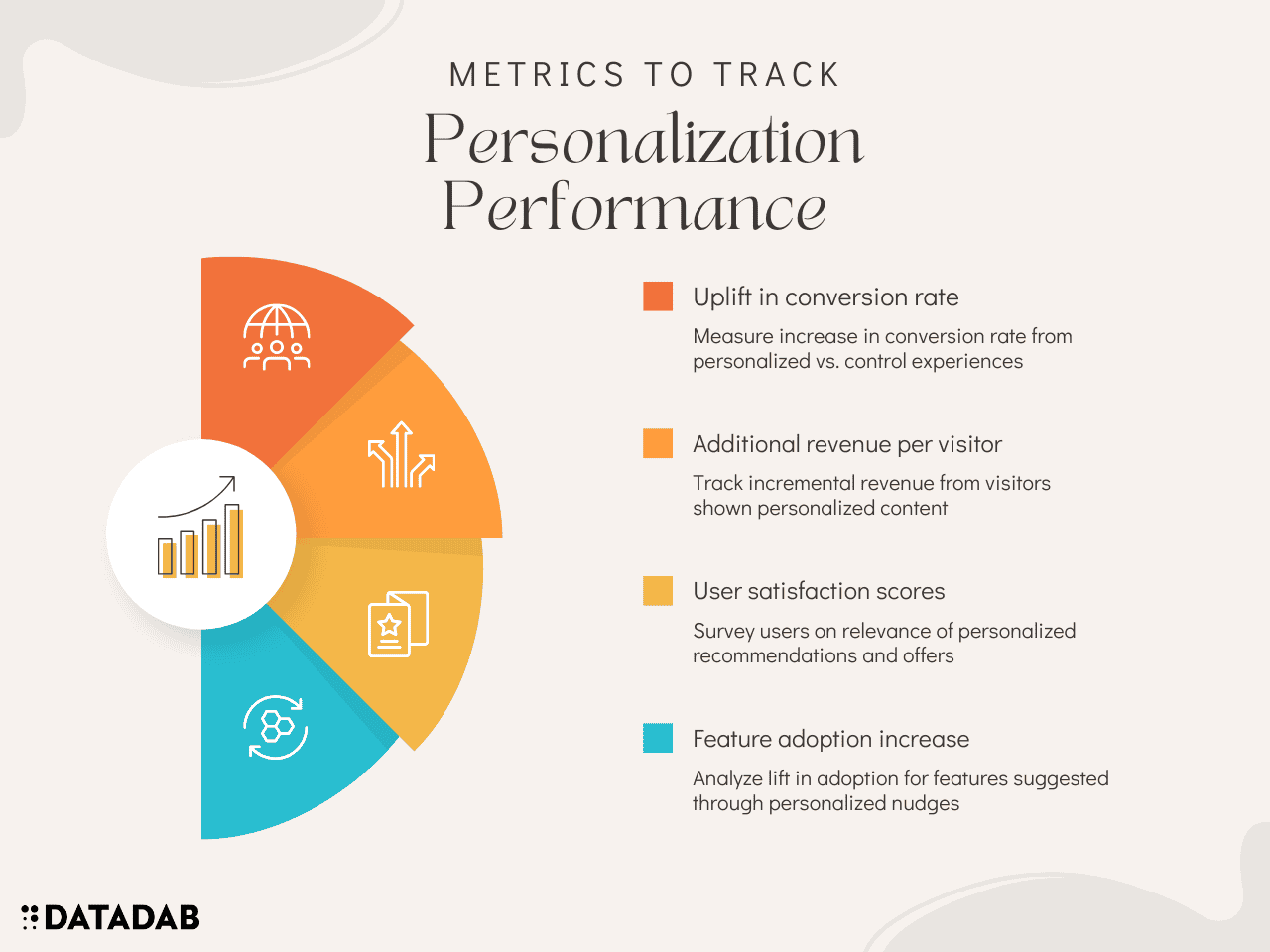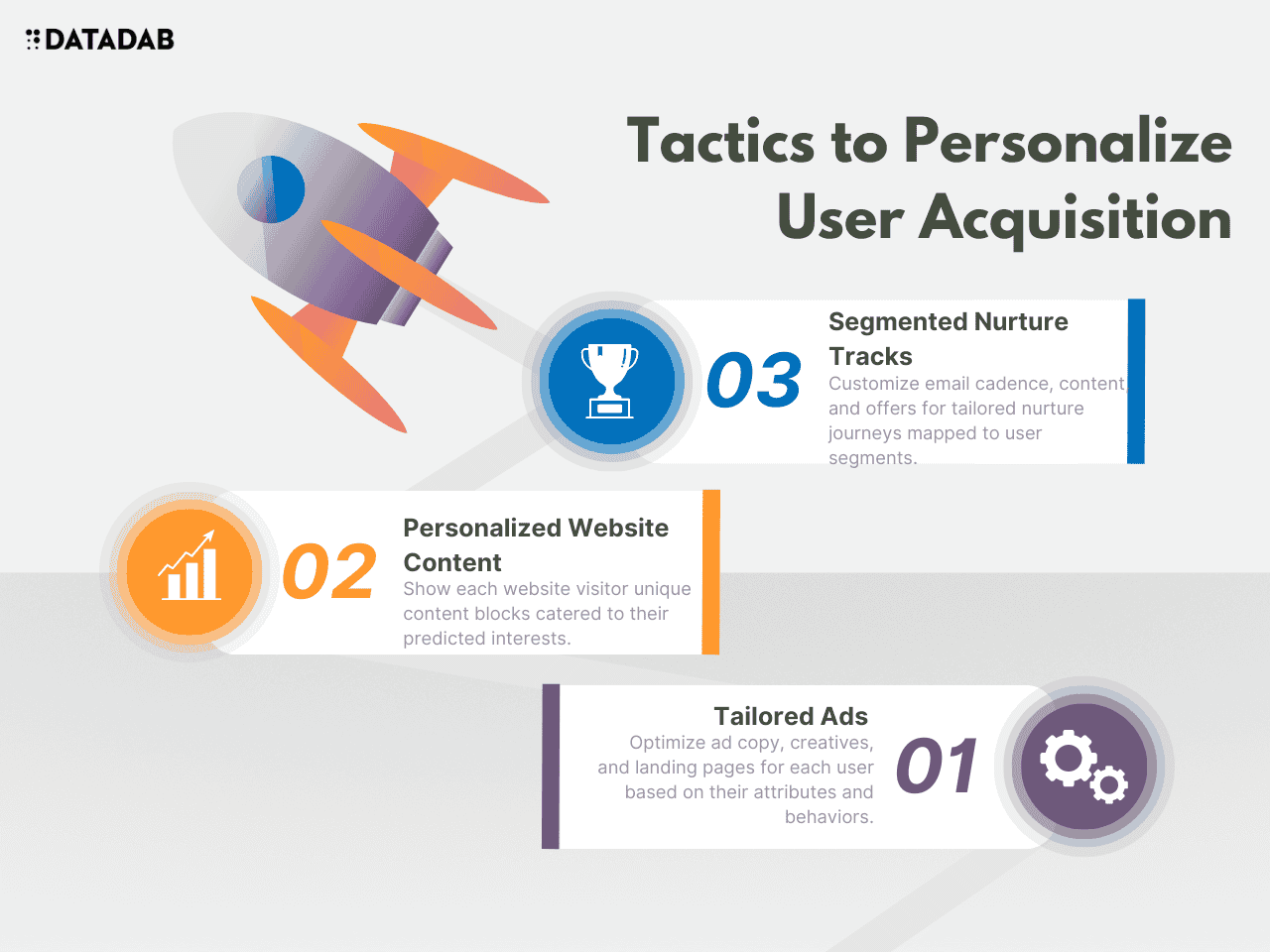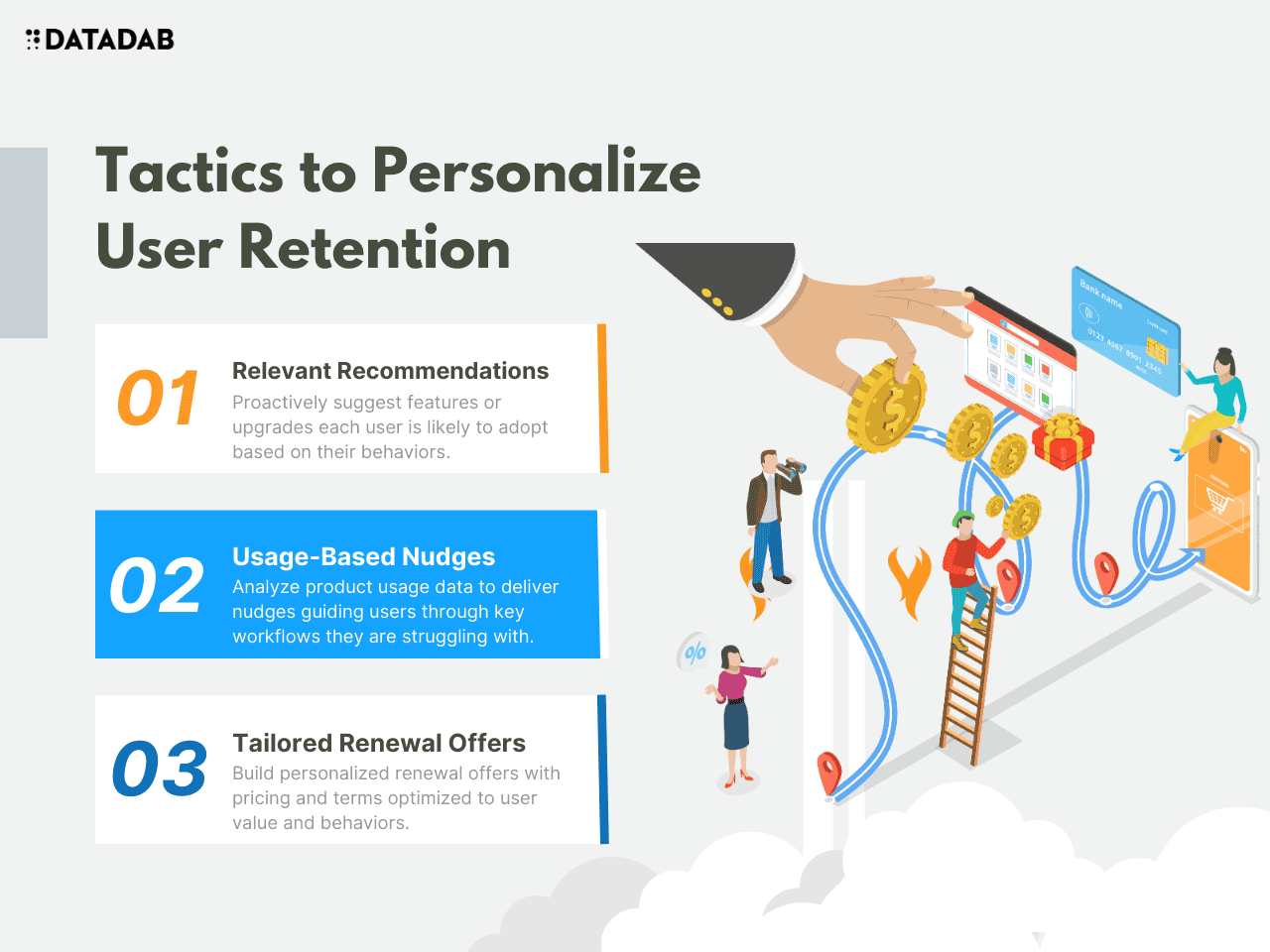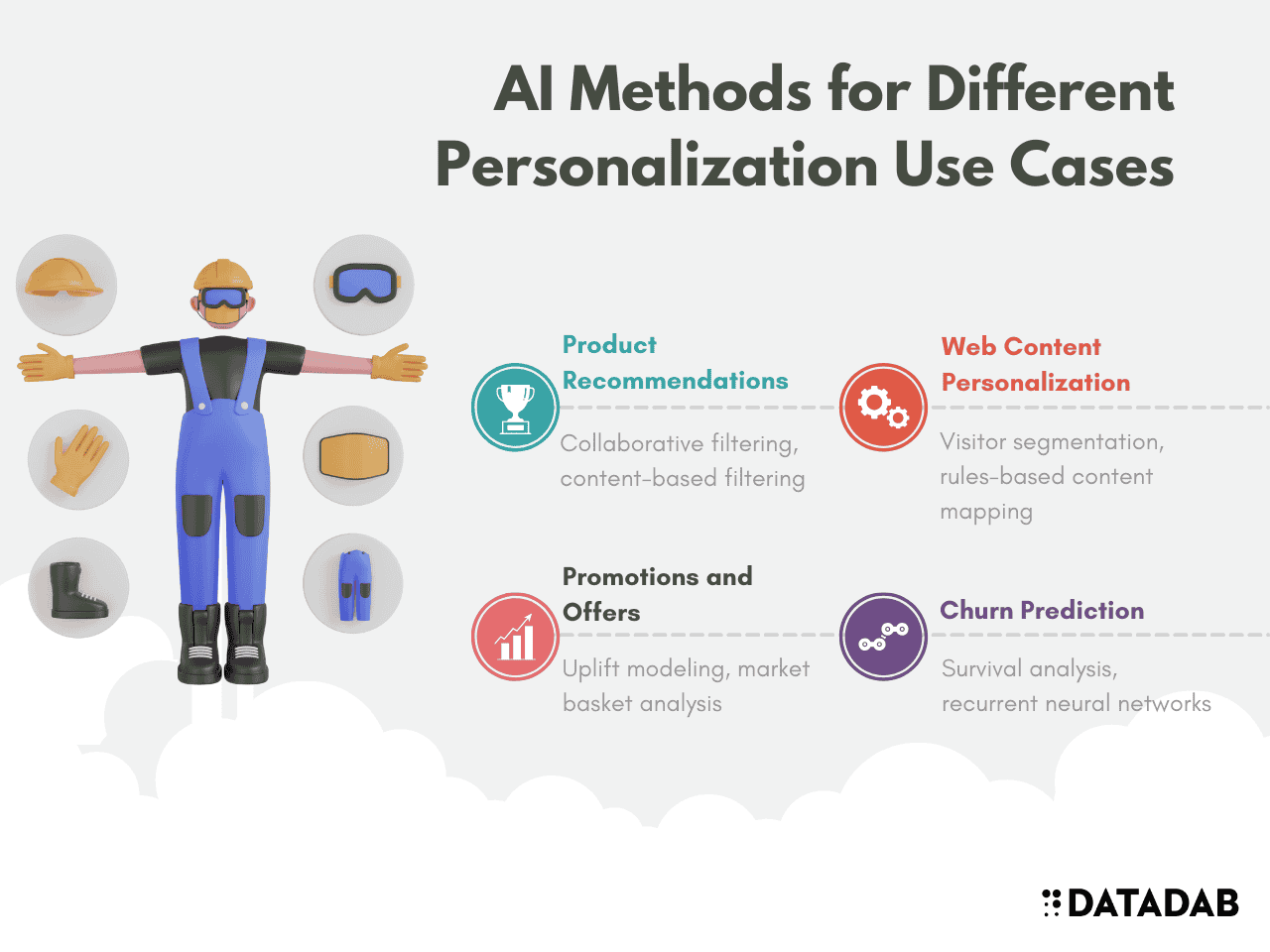"Personalized customer experiences are no longer a nice-to-have – they're quickly becoming table stakes users expect from all companies."
As an ecommerce SaaS marketer, I know first-hand how crowded and competitive our space has become. Every day feels like an uphill battle to convince new users our product is right for them while constantly worrying about losing customers to shiny new solutions. My north star has always been driving new activations and keeping existing users happy so they stick around.
But I realized no matter how great our features are, a one-size-fits-all approach just doesn’t cut it anymore. Customers expect deeply personalized shopping experiences, like the ones they get from Netflix and Amazon. If we don’t figure out how to tailor our messaging and product for each individual user, we’ll get left behind.
That realization is what led me to artificial intelligence and personalization. Now, I truly feel like it’s given us a competitive edge. With the ability to understand each user and cater the entire experience just for them, we’ve seen incredible lift across every metric I care about. Conversions, retention, expansion revenue - all through the roof.
I want to share what I’ve learned because this shift is coming for all ecommerce SaaS. Personalization is quickly becoming the new normal user expectation. In this guide, you’ll discover how AI can help you transform acquisition and retention, tactics to stand out, and how to actually make personalization work for your business. With the right strategy, you’ll be ready to deliver tailored experiences that speak to each individual user at scale. Let’s get started!

The User Demand for Personalization
Users have come to expect personalized products. After all, we live in a world of endless choice but limited time. Users need solutions that cut through the noise to deliver relevance.
Leaders like Netflix and Amazon have set the standard with personalized recommendations. Users now demand that same tailored experience, whether shopping for movies or SaaS applications.

But it's not just product recommendations. Personalized messaging and experiences across the entire user journey - from acquisition to onboarding to renewal - build affinity. When users feel truly understood, you gain a competitive edge.
| Personalization Stats | |
|---|---|
| 83% of users expect personalized experiences | [Salesforce] |
| 90% find personalized engagement highly valuable | [Epsilon] |
| 52% view personalized recommendations as highly important | [Epsilon] |
Luckily, advancements in artificial intelligence have put personalization within reach for savvy marketers on any budget. Let's explore how AI-powered personalization transforms user acquisition and retention.

Transforming User Acquisition
Standing out in a crowded ecommerce SaaS market requires truly resonating with each potential user. Blanket messaging fails to cut through the noise. Here's how personalization can lift your acquisition strategy:
Tailored Ads
Targeted ads are table stakes. But AI-powered advertising goes further by optimizing copy, creatives, and landing pages for each visitor in real-time. This starts with understanding user intent based on their past behaviors across devices.
Then, generate personalized ad copy and landing pages customized to each user's predicted interests. This messaging matching ensures your ads speak directly to the individual. Personalized ads see conversion lift between 10-40%.
Personalized Website Content
Continue tailoring the experience post-click on your SaaS product site. Generate customized content modules and calls-to-action for each visitor. Prioritize features, integrations, and value propositions predicted to resonate based on individual attributes.
This website personalization keeps visitors engaged with the most relevant information. It directly answers the question - why is this SaaS perfect for me?
Segmented Nurture Tracks
Traditional nurturing sends every new lead down the same path. But users have different needs and interests. Build segmented nurture tracks catered to specific user profiles. Customize email content, cadence, offers, and more for each track.
Guide users down tailored nurturing journeys that speak directly to them. This aligns perfectly with user expectations for personalized engagement.
In summary, savvy marketers use AI to tailor ads, website experiences, and nurturing. This fixes the generic, spray-and-pray flaws of traditional acquisition tactics. When you speak to the individual, performance lifts.

Boosting User Retention
Beyond acquisition, personalization is critical for retaining and growing high-value users. Here are proven tactics to reduce churn and drive expansion revenue:
Relevant Recommendations
Powerful recommendation engines analyze user behaviors to detect needs and predict which features or upgrades they are most likely to adopt. Deliver these personalized recommendations across channels to nudge users.
For example, prompt users with suggested integrations that align with their tech stack and usage patterns. Recommend new product capabilities that resonate based on their roles and functions. This drives adoption, retention, and expansion revenue.
Usage-Based Nudges
Analyze product usage data to detect adoption barriers in real-time. Deliver in-app nudges guiding users through key workflows they are struggling with. Provide prompts for unused features that would be valuable based on their usage patterns.
These personalized nudges smooth out the onboarding process and eliminate friction points. They show users the product's value and prevent churn from lack of adoption.
Tailored Renewal Offers
Generic discounting and blanket retention offers are ineffective. Leverage AI to understand the individual user value, price sensitivities, and behaviors of each subscriber. Generate tailored renewal offers with customized pricing and contract terms that maximize the chance of renewal for each user.
Present these offers at the optimal time based on predictive models. Personalized renewal optimization minimizes churn, while maximizing customer lifetime value.
In summary, savvy SaaS marketers use personalization across the customer journey to stand out among competitors. When users feel understood and catered to, you gain their loyalty and business. Match users to the right experiences at scale with AI.

Executing Personalization
We've discussed why personalization matters and high-impact tactics to stand out. Now let's explore how you can actually execute personalization given likely limited data science resources. Here are two viable models:
Leverage an Integrated Personalization Suite
Turnkey solutions like Evergage allow savvy marketers to activate personalization without extensive data science resources. These tools integrate with your ecommerce SaaS platform and come pre-packed with machine learning capabilities.
Simply point the suite at your data and user segments. Then build tailored ads, website content, recommendations, nudges, and renewal offers through intuitive drag-and-drop interfaces. This democratized approach allows marketers to deliver personalized experiences in just weeks without depending on engineering teams.
Build In-House with a Framework
For ecommerce SaaS products with massive existing user data and technical capabilities, building custom personalization in-house can make sense. MLOps frameworks like Amazon Personalize provide the foundations while still requiring engineering work to productionize and integrate data.
This path allows for fine-grained customization and control but necessitates months of complex development work. Still, advanced SaaS teams may find the long-term upside worth the effort.
Regardless of approach, savvy marketers now have options to activate sophisticated personalization without deep technical expertise. The days of solely relying on generic targeting and segmentation are over. Use AI to get granular and speak to each individual user.
Measuring Personalization Success
Personalization delivers immense upside. But savvy marketers know technology alone isn't silver bullet. You must continuously monitor efforts and optimize performance. Here are best practices:
- A/B Testing - Rigorously test personalized experiences against a holdout group. Quantify lift in target metrics like conversions to prove impact.
- Iteration - Analyze testing insights to rapidly iterate on underperforming experiences. Personalization is a process of continuous optimization.
- Surveys - Ask for direct user feedback on personalized content relevancy. Incorporate findings into future efforts.
- Analytics - Leverage attribution to quantify the impact of personalized tactics on metrics like account expansion and lifetime value.
With testing and optimization, you'll maximize personalization ROI. But you can't take it for granted. The factors driving engagement vary across user segments. Savvy marketers closely monitor results and double down on what works.
Looking Ahead
While personalization adoption is accelerating, immersive tailored experiences represent the next frontier. Here are a few emerging capabilities poised to further transform user acquisition and retention:
- Unified Cross-Channel Personalization - Delivering consistent tailored experiences across all touchpoints in the user journey.
- Augmented Personalization - Using AI to not just optimize experiences but synthesize completely novel, one-of-a-kind experiences tailored to micro-segments.
- Real-Time Personalization - Adjusting messaging dynamically during live sessions based on user behaviors and responses.
- Expanded Data Integration - Tapping into expanded datasets like voice analytics to build richer user profiles.
These innovations highlight the continued potential to deepen personalization with AI. One-to-one matching between user needs and experiences is the goal. Savvy SaaS marketers will continue pushing the boundaries.
Conclusion
Personalization is no longer a nice-to-have. It's quickly becoming the norm user expectation. Standing out in competitive ecommerce SaaS verticals requires truly tailored messaging and experiences powered by artificial intelligence.
Luckily, turnkey solutions democratize sophisticated personalization capabilities for savvy marketers. With the right tools and strategy, you can deliver deeply relevant experiences across channels to acquire, retain, and expand high-value users.
When users feel understood and catered to, you gain a competitive edge. Combine personalized ads, website content, recommendations, nudges, and renewal offers to speak to each individual at scale with AI.
This guide provided actionable tactics and execution guidance. The upside for your north star metrics is immense. Don't be left behind as personalization becomes the new standard. Embrace AI-powered personalization to drive measurable acquisition, retention, and revenue growth.
FAQ
1. What types of data do I need to enable personalization?
Robust personalization requires rich user data from both first-party (your own) and third-party sources. Important data feeds include:
- First-party transactional data - User purchase history, product/feature usage data, support tickets, etc. This provides the foundation for understanding user needs and predicting future behaviors.
- First-party CRM data - Email engagement, user profiles, demographics, consent data, surveys, NPS scores, etc. Helps build 360-degree user profiles.
- Third-party intent data - Site/ad engagement, browse/search history, and more from intent providers like Bombora. Augments your first-party data.
- Third-party enrichment data - Firmographic, technographic, and behavioral data from providers like Clearbit. Fills profile gaps.
The more data integrated into your personalization engine, the more accurate and relevant experiences you can deliver. Ongoing data quality checks and hygiene are also critical.
2. How do I get leadership buy-in for investing in personalization?
Getting budget and resources allocated requires building a compelling business case. Collect data points and industry research to quantify the revenue upside:
- Proven results - Point to lift other companies have achieved in metrics like conversion rates and retention from personalization.
- Competitive parity - Note competitors who have implemented personalization and are raising user expectations. Position personalization as necessary to stay competitive.
- Customer feedback - Survey users directly to quantify their desire for personalized experiences and gauge impact on loyalty/churn.
- Pilot results - Run small-scale personalization tests with control groups and share results on incremental lift achieved.
With credible projections grounded in data, you can position personalization as a strategic imperative rather than a nice-to-have. Connect to key company goals like user acquisition, retention, and lifetime value expansion.
3. What are strategies to gain user trust on data collection for personalization?
Transparency and control are key to building user trust:
- Explain value exchange - Clearly communicate how collected data improves the user's experience through relevance and customization.
- Data minimization - Only collect the minimum data needed to enable personalized experiences. Avoid extraneous data collection.
- User controls - Provide preferences to opt in/out of data collection and personalization features. Respect user choices.
- Anonymization - Remove PII from data used for personalization modeling. Aggregate insights rather than tracking individuals.
- Security assurances - Detail compliance with regulations like GDPR and measures in place to secure user data.
- Delete upon request - Allow users to request their data be deleted. Purge records completely rather than just deactivating.
Gaining trust requires going above and beyond on transparency, choice, privacy, and security. Users understand the value exchange of data for more relevance. Maintain alignment.
4. How can I personalize the website experience for each user?
Use a robust personalization engine to tailor the entire site experience for each visitor in real-time. Tactics include:
- Modular content blocks - Create personalized content modules highlighting different features, case studies, or testimonials you can serve dynamically.
- Individualized product tour - Guide users through a walkthrough of the product interface customized to highlight the most useful areas based on their profile.
- Smart site search - Tailor search results based on visitor history and context rather than just generic keyword matching.
- Intercept offers - Detect intent to churn and serve personalized promotions to retain users.
- Navigation prioritization - Dynamically reorder site navigation and featured content sections based on visitor attributes.
- Predictive messaging - Proactively serve relevant messages like product tips based on visitor behaviors.
The right personalization engine lets you customize everything from layouts to content to navigation for each visitor. Think beyond just recommendations.
5. How can I scale personalization across our growing user base?
As your user base grows into the millions, personalization systems must scale while maintaining relevance. Strategies include:
- Cloud-based personalization platforms - Leverage purpose-built solutions like Evergage that deploy machine learning models on distributed cloud infrastructure.
- Segment users - Reduce computations by grouping users into segments with common attributes for easier modeling. Balance segmentation and true 1:1.
- Rules and heuristics - Combine data-driven personalization with business rules and human-tuned heuristics to optimize and scale.
- Tune for scale - Streamline algorithms by reducing variables modeled, removing overfitting, and simplifying computations through approximations.
- stateful modeling - Use approaches like Markov chains that factor in user history and state rather than recomputing everything from scratch each time.
Maintaining sub-second response times for personalization even with heavy traffic volumes requires optimizing algorithms, infrastructure, and smart segmentation.
6. How can I quantify the ROI of personalization initiatives?
Robust measurement is critical for proving the business impact of personalization. Key ways to quantify ROI include:
- A/B testing - Test personalized experiences against a holdout group. Measure incremental lift in conversion rates, revenue per visitor, orders, etc.
- ** Attribution modeling** - Analyze user journeys to quantify the downstream revenue influence of personalized touchpoints.
- Incremental analysis - Compare metrics like adoption rates for users who received personalized recommendations versus those who didn't.
- Churn analysis - Gauge the impact of personalized retention offers by analyzing retention rates across user groups.
- ** Surveys** - Ask users directly about the relevance of personalized experiences and their impact on satisfaction and loyalty.
A data-driven approach tracking users from exposure through conversion is essential to benchmarking ROI and optimizing personalization initiatives.
7. What are common mistakes companies make with personalization?
Some common missteps include:
- No measurement - Failing to thoroughly test and quantify lift versus a control limits ability to optimize efforts.
- Creepiness factor - Getting too granular without transparency around data collection makes users uncomfortable.
- Generic experiences - Failure to achieve true 1:1 personalization limits results. Small tweaks are not enough.
- Inaccurate models - Poor data quality, biased algorithms, and overfitting lead to irrelevant experiences.
- Stale models - Not refreshing models frequently using new data causes personalization quality to deteriorate over time.
Avoiding these pitfalls requires striking the right balance between relevance and transparency while obsessing over measurement, iteration, and continuous optimization.
8. How can I expand personalization to more channels and use cases over time?
Start with one or two high-impact areas like website experience and ads. After proving success, expand personalization to more channels:
- Email - Tailor promotional and nurturing email content, sender, subject lines, etc. based on user attributes.
- Mobile apps - Personalize in-app experiences, push notifications, and messaging.
- Service - Route support requests intelligently and suggest help content based on user history.
- Ads - Expand personalized targeting and creatives across other ad channels like social, streaming, and OTT.
- Catalog - Customize product descriptions and specifications based on visitor segments like industry and role.
Look for additional moments in the user journey to inject personal relevance. Prioritize expansion areas with the most potential business impact.
9. How can personalization support our diversity, equity, and inclusion initiatives?
Personalization can help promote diversity, equity, and inclusion but also risks amplifying bias if not implemented carefully:
- Inclusive data - Ensure user data covers a diverse range of demographics and psychographics representative of your users.
- Bias mitigation- Actively monitor for algorithmic bias and rebalance models. Leverage techniques like adversarial debiasing.
- Fairness constraints - Impose constraints on model optimization to align with DEI criteria like equal average accuracy across user groups.
- Responsible recommendations - Carefully curate product/content suggestions to avoid reinforcing stereotypes or insensitive associations.
- Inclusive default experiences - Design generic experiences without personalization to still be relevant across diverse users through inclusive content and imagery.
With the right data inputs, constraints, testing, and governance, personalization can power more equitable, accessible user experiences.
10. What emerging innovations will shape the future of personalization?
Key emerging personalization innovations include:
- Hybrid recommendation systems - Combining collaborative, content-based, and deep learning algorithms together for optimal results.
- Federated learning - Enabling collaborative personalization models across companies without compromising user privacy.
- Generative AI - Using techniques like diffusion models and GANs to automatically generate tailored images, video, and content.
- Lifecycle personalization - Shifting from one-off interactions to continuously adapting personalization across the entire user journey.
- Contextual bandits - Choosing optimal experiences in real-time based on dynamically changing context like user mood and location.
Advances in AI will enable more immersive, adaptive, and privacy-preserving personalization than ever before.



